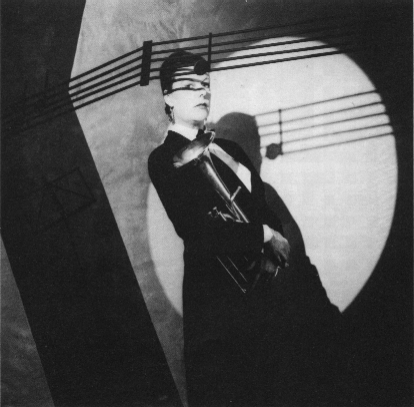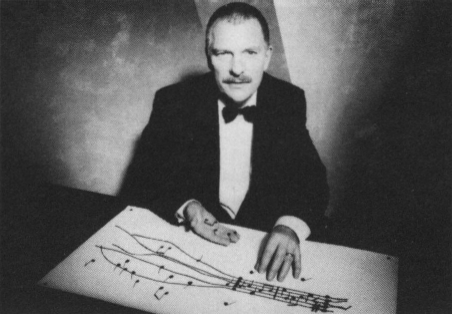| B U R N I N G B R I D G E S | |
|
WORDS: CHRIS PARKER PHOTO: NICK WHITE |
MIKE & KATE WESTBROOK PLAY SAD SONGS FOR A BROKEN EUROPE |
|
M I K E A N D K A T E Westbrook are something of a phenomenon, given the contemporary musicial and social climate. While large sections of both jazz and pop worlds are increasingly geared to the production and revival of sounds with an instantly accessible, dancable beat, to the superficial, the meretricious, the Westbrooks' last three Hat-ART recordings, all double albums, have been: a rich jazz-rock confection dedicated to Ellington (On Duke's Birthday) a challenging Trio outing (Love For Sale) reinterpreting, eveything from "In The Bleak Midiwinter" to "Buddy Can You Spare A Dime?" via Brecht/Weill; and the delightfully exuberant, occasionally intensely solemn jazz-orchestra settigs of Rossini (Westbrook-Rossini).  And while the English have apparently yet to acknowledge the fact that their membership of the EEC formalises their part of Europe, the Westbrooks perform a great deal more frequently in France. Germany, Greece, ltaly and Scandinavia than in the UK - Kate singig in French, German, Greek and ltalian. Their new work, London Bridge Is Broken Down, is perhaps their most ambitious project to date, involving a 22-picce chamber orchestra, Le Sinfoniettafrom Amiens, and a nine--piece jazz ensemble. It is a dense, haunting contemplation of irony, ambiguity, courage and love, inspired by,and structured around what the Westbroks refer to as a "personal map of Europe". It moves from a setting of the children's rhyme "London Bridge Is Falling Down" through musical meditations on Wenceslas Square in Prague and the Berlin Wall (involving texts by German poets Lassahn, Goethe and Busch). a "Viennese Waltz" and a lyrical interlude "Für Sie", to a section entitled "Picardie", sparked off by thoughts about British involvement there during the First World War. A B O U T T H I S "personal map" Mike explains: "It's not like a comprehensive map of Europe, but just odd places here and there. We tried in the titling to suggest the idea of the icons of contemporary Europe - Wenceslas Square, the Berlin Wall, Picardie - and in the end we thought of 'London Bridge', which was both the starting-point of our journey and the bridge to Europe." Kate immediately sounds a warning note: "It's a sort of odyssey, a sort of diary, but it has to be very selective, because otherwise it becomes too programmatic. The 'Wenceslas Square' section, for example, revolves around the complexity of the East-West thing, also expressed in 'Berlin Wall'; it's never clear-cut and simple and the ambiguities are very present to us, because we play in both the East and the West. So, again in the 'Berlin Wall' section, we wanted to do a love song in German because we felt we had to inject a note of optimism and ordinary human endeavour into a section concerned with what is basically an area of conflict." C E R T A I N L Y T H E various moods conjured up by the music are subtle, elusive, complex; in addition to containing what Kate describes as "some of the darkest moments Mike has ever created", it is at times rambunctious, even rowdy - though even these apparently ingenuous moments are often heavily ironic. A good example is Siegfried Sassoon's acid "Blighters", an indictment of home-front war-hysteria-as-spectatorsport, and the opening text of "Picardie", set to a rnusic-hall tune. The poem's central image, that of a tank lurching down the stalls to a ragtime shimmy, freezes 'the grinning and cackling of the war's "audience": "And there'd he no more jokes in music-halls just as the tune is subverted, "stood on its head a few times", as Kate puts it.  The same subtlety informs the treatment of the concluding text of "Picardie", "Aucassin Et Nicolette". This is a 12th-century prose piece whose anonymous writer expresses an irreverent unwillingness to go to Heaven because of the boring company he'll find there, choosing instead to go to Hell, as long as his beloved Nicolette can accompany him. It provides, in Kate's words, "a great ride-out, a great relief, a paean to life and joy and love, after a piece about places which are fundamentally trouble-torn". London Bridge as a whole is shot through with such ambiguities, ironies, paradoxes: the bridge itself is made sound by having a baby built into its base; the bird in "Ein Vogel", trapped on a lime twig, sings gaily as a black tomcat creeps inexorably towards it; in "Traurig Aber Falsch", evil people sing, laugh and make others laugh, pills taste like chocolates, politicians kiss babies, "facts are not bare, truth is not naked". Mike sees a parallel here with improvisation itself, which takes "a simple idea and, as you get deeper into it, complexities are revealed". The music as a whole, he says, "just became more and more complex as the piece evolved. It made tremendous demands on the musicians, but all these people with different back-grounds and skills eventually gelled, and the whole thing is much richer as a result." The piece is certainly an intriguing mix of composition and improvisation, and as such reflects Mike's increasing commitment to expanding the jazz idiom. "I feel, as Mingus must have done, that I want to blur the distinction between what's improvised and what's written, even to the extent of having an ensemble passage written which could be improvised. It's not satisfying if the only really complex moments occur when people are improvising. For instance, in a typical mainstream jazz performance, you get people playing a simple riff - a blues, perhaps - and then it goes off into very complicated solos. Bebop resolved that by having complicated themes and then very complicated solos - though sometimes, admittedly, you get very complicated bebop themes followed by very simple solos! But I wanted to integrate the two, composition and improvisation, more fully, and so there are passages where the Sinfonietta and the jazz band are playing together: our brass, their clarinet and woodwinds all mixed up - passages where it's just one music. These passages are very special." W H I C H L E A D S us on to the somewhat chequered history of jazz/ string collaborations. Mike cites Nat King Cole's "Lush Life" as a favourite, but otherwise sees little of value in many previous attempts at collaboration. "A lot of third stream stuff wound up with neither the virtues of classical music nor those of jazz. The Parker things used strings just as prettiness behind the solos. But I've always wanted to write for strings: they're the most natural way of putting music together, the crowning glory, if you like." Kate again sounds a necessary warning note: "London Bridge started, spiritually, from jazz roots, but it's basically just music. I think we've got some way to go before there's an understanding in the musical world of this thing greater than any category: Music." Mike warms to this theme: "In Europe, bands like the Vienna Art Orchestra are taking apart the whole classical/jazz thing and creating an entirely new repertoire - that's the sort of milieu in which we've moved with our theatre and dance work and our use of texts. No one else does that, as far as I know. Very little music exists which brings classical and jazz musicians together on an equal footing - that's why our work is so important. " This collaboration between Alexandre Myrat's Sinfonietta and the Westbrook Orchestra, which features Chris Biscoe and Peter Whyman on saxophones, Paul Nieman on trombone, Brian Godding on guitar, Steve Cook on bass, Tony Marsh on drums and Graham Russell on trumpet, is to be recorded in Paris early in December for Virgin's new Venture label. Both Mike and Kate are very enthusiastic about the unequivocal nature of the company's commitment: no reservations from them about length, inaccessibility - just wholehearted enthusiasm. Having heard the piece live in Strasbourg and on tape from Amiens, I find it impossible not to share this feeling - it's a major work which operates on many levels, incorporating a stunning variety of textures and moods into a deeply satisfying dramatic whole. |
|

|